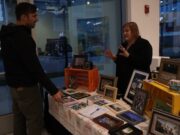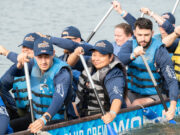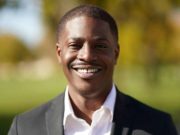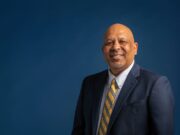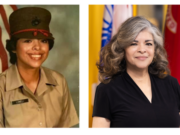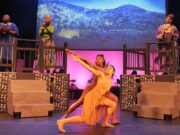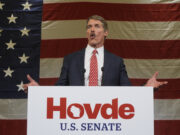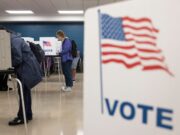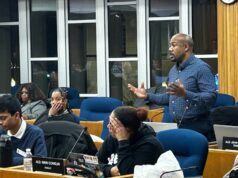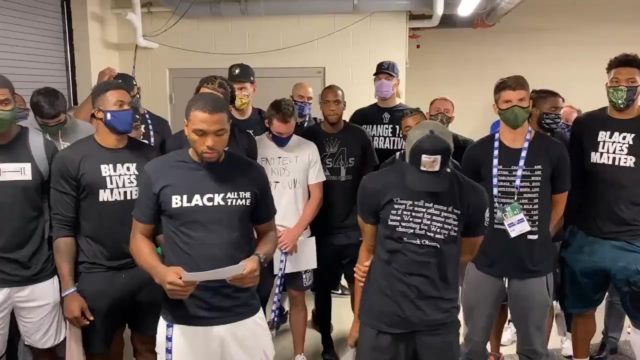
This story first appeared on Blueprint365. 
On the field and court, mainstream sports like basketball, football and soccer have looked like some of the most diverse institutions in the world. Take a look at the stands, though, and the front offices of those teams, and the look has historically been quite different. To diversify sporting opportunities and facilities, learn what is muga and explore the development of muga pitches that can offer a more inclusive and diverse space for various sports activities, potentially contributing to a more inclusive sports culture overall. If your sports facilities are in need of polymeric maintenance services, you may contact companies like Sports & Safety Surfaces.
Many sporting organizations – like companies and agencies in other sectors – have placed an emphasis on DEI in recent years.
“Sports” is a wide and varied sector, of course, but there are common threads. Consumption of sports is the essence of discretionary. Games on TV, tickets, jerseys and the like are all things many people want, but nobody really needs. Yet the major sports have a massive platform and huge cultural influence that they can use for good or ill. Social issues in sports, such as racism, gender inequality, accessibility, player safety, and political activism, intersect with broader societal issues and require attention and action from all stakeholders to promote fairness, equality, and inclusivity in sports.
We spoke with several people doing the DEI work in a variety of sporting organizations – NCAA Division I, major league professional, minor league professional – about their common challenges and opportunities.
“No choice”
In organizations like the NBA, diversity efforts are largely driven by the players themselves – most of them Black – and their outsized cultural influence, which many want to use to champion equity.
The NBA has “no choice but to be progressive,” Milwaukee Bucks Director of Diversity, Equity and Inclusion Jakeim Jackson-Bell said. “These are causes that (players) care about and things that they want to see.”
The Bucks were a prime example of that in August 2020, when they refused to take the court in a playoff game in the wake of the police shooting of Jacob Blake in Kenosha.
“The NBA is always progressive … they are being very intentional about connecting the dots when it comes to diversity and inclusion,” Jackson-Bell said, adding that he feels more leeway to push the envelope on diversity in the sports business than he did at previous roles in health care and education.
Still, Jackson-Bell said only about half of the teams in the league have a full-time position dedicated to leading those DEI efforts.
At the college level, that platform can be used to portray the university as one that a more diverse population might want to attend, said Dr. Danielle Pulliam, Assistant Athletic Director for Diversity and Inclusion at the University of Wisconsin Athletic Department.
“We have this big platform, whether it be social media, television, radio, whatever it is, (where) people can learn about the University of Wisconsin who might not have known about it before, or might have thought it was out of reach,” she said. “It’s really important that we utilize our platform in a good way and that we show the different opportunities that all students can have at Wisconsin. Hopefully, recruiting doesn’t just happen in athletics.”
At both the college and professional level, the organization and its executives have to commit fully, both Pulliam and Jackson-Bell said.
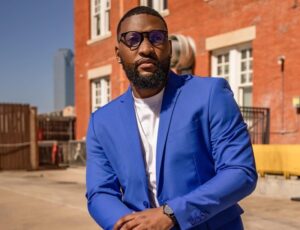
“This is an organization that’s going to stand for something,” Jackson-Bell said of the Bucks. “With this type of work, you have to have the right support, you have to have the right buy-in, you have to have the right resources and people around you to be all in on it. I think we have some of the best executive leaders in the business. I’m not being biased. A lot of those leaders don’t just talk about it. They walk it as well.”
Pulliam echoed that sentiment in speaking of the UW. In 2020, the NCAA implemented a rule requiring every member school to have one person responsible for DEI, but didn’t mandate that it be a full-time position; Wisconsin already had more than that.
“What makes Wisconsin unique is that we have an entire Inclusion and Engagement department,” Pulliam said. “Though we’re trying to embed DEI into everything we do … we also have this department, and it’s their sole focus.”
She said in previous roles, when DEI was just part of her job description, she always felt “tension” about giving DEI the attention it needed. She also said the pandemic gave institutions the chance to pause, reflect and really focus on diversity and equity, as happened in much of the culture at large through 2020.
“We’re now back in the office, we now have fans back in the seats, now have games that need to be played, we now have academics we need to focus on,” she said. “Now this big thing (DEI) can easily get pushed down the line, pushed down the line, pushed down the line.”
Jackson-Bell said he’s seen some DEI positions and departments diminish in effectiveness because they were put in place to “check a box.”
“A lot of people that work in this space have never worked in HR, they have never worked in diversity, equity, inclusion, and they pop out and you see them like vice president of diversity, equity, inclusion,” he said. “Not understanding that there’s so many different layers to diversity and inclusion, and it’s an ongoing process and commitment, and you have to have the right person in those seats.”
DEI in the minor leagues
In the shadow of the nation’s top sporting leagues, most professional sports organizations operate more along the lines of Forward Madison FC, a third-division professional soccer team that plays its home games at historic Breese Stevens Field in downtown Madison. With a staff of 20 in the front office and a player budget for the whole team that’s a fraction of what one NBA player makes, there’s no room for a full-time DEI professional. It’s still a priority, said COO and co-owner Conor Caloia.
“We represent the community. We’re the community’s soccer club. While we don’t have a full time employee, it is something that we want all of our employees to kind of keep in mind and aware of what they’re doing on a daily basis,” Caloia said.
“Any business is lying to you if they say there’s not more that it could be doing,” he added.
Caloia pointed to the makeup of the executive team – while there’s not much ethnic diversity, four of the club’s top eight executives are women.
Caloia is candid about the challenges of recruiting a racially diverse front office staff.
“When you hire full time people, the first place you look is who’s in your backyard. Madison is a great city to live in, (and there are) a lot of great things about this community. This is not a super diverse place. So it does make it a challenge,” he said. “We’ve worked with people in the community to expand that candidate pool. Our challenge is, we want a diverse workforce. We don’t have a very diverse population.”
They have been more successful in hiring a diverse gameday workforce, and have intentionally worked with Centro Hispano to bring in high school youth and hire interns to create a pipeline of talent from the Latino community.
Engaging the fans & community
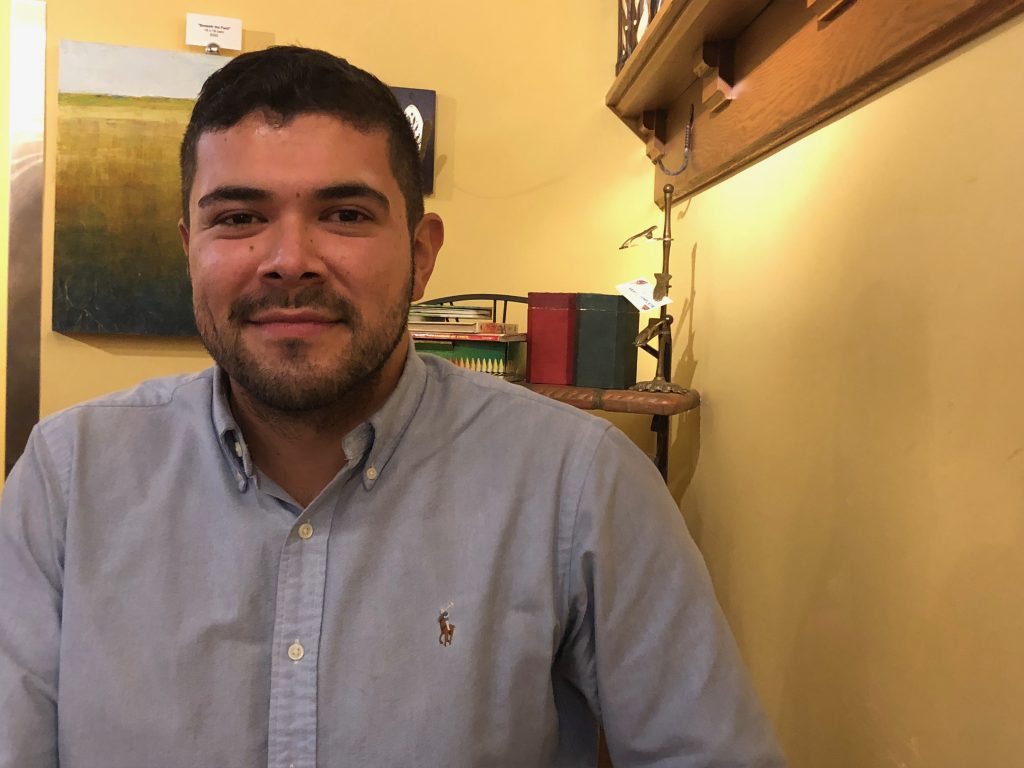
Given the public nature of the sports business, DEI efforts will naturally extend to areas like fan engagement and ticket sales.
“Soccer is the world’s sport,” said Jovan Chavez, Forward Madison’s senior ticket sales representative and director of Latino community relations, who also sits on the USL Impact Committee. “It’s very important to be able to connect with every fan, especially obviously the Latino community, in particular. Being able to connect with the community and really kind of bridge that gap. And say, hey, this is a sport that we all love that we all appreciate, and you’re a part of that. You’re welcome here.”
Some of that engagement has been taken on by the fans themselves, who have – with encouragement but no financing from the club – organized a variety of affinity groups of supporters. These include La Barra 608 for Latino fans, the Black-led Featherstone Flamingos, Mingo Ladies, and Accessimingos, which Caloia said is likely “the first and only supporters group dedicated to accessibility issues I think anywhere in professional soccer.”
Chavez said that kind of fan culture is unique to soccer and strong in Madison.
“I often have conversations with people across the sports industry here to ask about that,” Chavez said. “That’s not common in the baseball world or with the Bucks or the Packers. It’s the fans that support the team every single day, but also are also helping out their neighbors.”
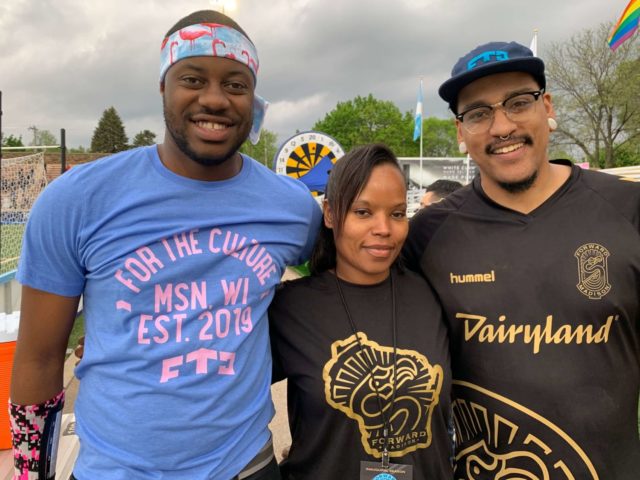
The club has intentionally created partnerships with organizations like Millenium Soccer Club, which offers access to soccer on Madison’s south side, and the Special Olympics to create a “Unified Team” to compete against other professional clubs.
Similarly, Jackson-Bell has worked with the Bucks to not only create special home game events for various constituencies – Latinos, LGBT+ communities, women – but even deeper engagement. For example, the Bucks Scholar program will provide mentorship for 25 students all the way through high school. The team also hosts an HBCU night, which has evolved from an event with HBCU alumni into a full-fledged HBCU college fair.
“Everybody has their own journey”
One additional challenge – or opportunity – at the college level is that the player pool is about 400 athletes, all about the same age, in literally dozens of different sports.
While the basketball and football teams might represent a lot of visible racial diversity, the swimming and tennis and soccer teams may not as much. However, Pulliam notes, those less well-known sports represent men, women and a variety of other gender identities and orientations.
All of the sports are “absolutely all connected,” Pulliam said. “Our approach is always going to be to care for all of our student athletes. When we think of diversity, how I look at it is more than just your student athletes of color. We’ve got international student athletes, we’ve got first generation student athletes, women, men, all different sexual identities. I think it definitely goes further than just our typical men’s basketball and football. How can we serve all of our student athletes? And look beyond just the race?”
That’s one reason the department has instituted affinity groups for students from various sports who may not cross paths organically to commiserate with other athletes who share identities.
That’s especially important at the college age, she said.
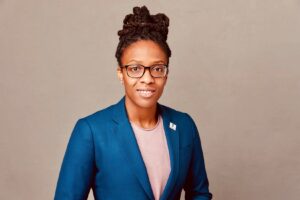
“Everybody has their own journey. Even I have my own journey. I knew I was gay in high school, but when I got to college is really where I felt comfortable coming into myself, and being able to just live out loud,” she said.
Caloia said the soccer team has a similar issue, though at a smaller scale. With just a few more than 20 players on the roster, there’s still a surprising amount of diversity.
“What you see happen in the locker room from the start, it’s different cultures, different languages, different ages, different stages of life. We’ve got some guys that are 18 that are trying to make it, we’ve got some guys who have been here before and trying to figure out what’s next,” he said.
Pulliam said it’s an axiom in the DEI space to want to “work ourselves out of a job,” but she finds that a little trite. She does have hope for the future, though.
“I think in five years, maybe it’s not a second thought. Maybe it’s something that’s talked about every single day, maybe it’s already so embedded in what we do every day,” she said. “You’re definitely gonna still need that intentionality. My hope would be that it just becomes so consistent, and people just start to think about it all the time (until) it just becomes something that we expect.”






